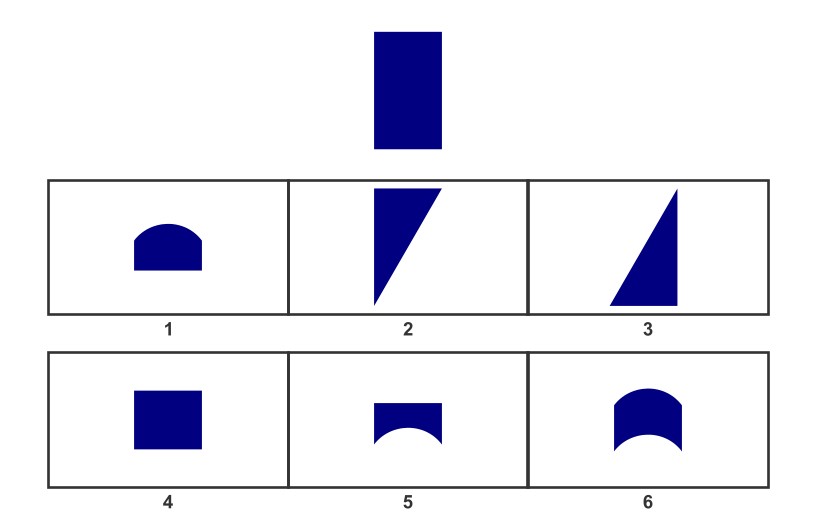The Wechsler Intelligence Scale for Children (WISC) test is often used as an entrance exam for gifted and talented programs for determining cognitive strengths and weaknesses, and is individually administered, usually by a psychologist.
This comprehensive, clinical instrument assesses the cognitive intelligence of children aged 6 years 0 months through 16 years 11 months. The major difference between how the test is given to each age is the starting point of the test; older kids will start at more difficult sections of each subtest. The WISC-V is the updated version which has more interpretive power, is more user-friendly and is also more efficient.
Testingmom.com helps prepare your child for the WISC-V test by providing challenging questions and games, and by making learning interesting and fun for your nine-year-old! We have 100’s of practice tests and games that will fully prepare your child for the WISC-V. Below are a couple of examples of our practice questions.
1. Working Memory – Letter-Number Sequences
In this subtest, the tester will read a series of numbers and letters. Your child is asked to recall the numbers in ascending order and the letters in alphabetical order. This subtest assesses your child’s working auditory memory, their ability to retrieve information just given to them verbally, hold on to it, and then do something with it.
Parent Instructions
Parent, say to your child: “Let’s play a game. When I say a group of letters and numbers, I need you to say back to me the numbers beginning with the lowest number and going to the highest. Then say the letters back to me in alphabetical order. For example, if I say D – 3, you would say back to me “3 – D” – the number first and then the letter. If I say 6 – 2 – C – A, you would say back to me 2 – 6 – A – C – the numbers first from lowest to highest and then the letters in alphabetical order.”
The numbers and letters cannot be repeated.
The actual subtest consists of 10 items.
Recite the numbers and letters very clearly with 1 number/letter per second. Drop your voice at the end of the series so your child knows it is over.
Parent says: 2, I, G, 7
Answer: 2, 7, G, I
2. Visual Spatial Reasoning – Visual Puzzles
The visual Puzzle subtest measures your child’s ability to analyze and synthesize visual-spatial information. Within 30 seconds, your child views a completed puzzle, then chooses the 3 pieces that, when combined, make up that puzzle. In some cases, 1 or more of the pieces will need to be “mentally rotated” to fit into the puzzle.
Parent Instructions
Parent, say to your child: “Look at the shape on top. That is a completed puzzle. Choose the 3 pieces below that combine to complete the puzzle.”
-As the puzzles get harder, your child may have to mentally rotate or flip 1 or more puzzle pieces to make it fit into the puzzle.
-Your child’s responses can be in any order.
-Your child can point to or say out loud the numbers that make up her answers.
-Your child must select 3 pieces. In some cases, 2 pieces might complete the puzzle, but that isn’t the correct answer. There will always be 3 pieces that combine to make up the puzzle.
*On the test, students have 30 seconds to answer. Timing starts from the end of the question asked. When you are practicing this skill, don’t worry about the timing. Your child will get faster with practice. Just know that this is a timed part of the test.


Answer: 1, 4, 5
3. Fluid Reasoning – Figure Weights
Figure Weightsis a Fluid Reasoning subtest that measures quantitative and inductive fluid reasoning. Here, the child looks at a scale with missing weight(s) and chooses the response option that keeps the scale balanced. This subtest requires students to apply the quantitative concept of equality to understand the relationship among objects, and then use concepts of matching, addition and/or multiplication to choose the answer.
Parent Instructions
Parent, say to your child: Which one of these (point to the answer choices) weighs the same as this (point to the object on the left side of the scale with the question mark).
On the actual test, students get 20 seconds for easier questions (i.e. 1 – 10) and 30 seconds for harder questions (i.e. 11 and beyond).
Answer: 4
*1 quadrangle + 4 small squares = 1 quadrangle + 1 diamond. That means: 1 diamond is equal to 4 squares. So, 1 diamond (4 squares) + 4 squares = 8 squares. The trick is in the answers #1 & #3, but there is no equation between the quadrangle and the diamond, so we cannot know if they are equal and interchangeable.
